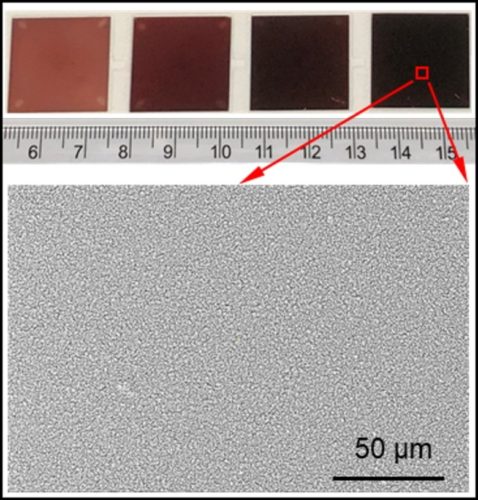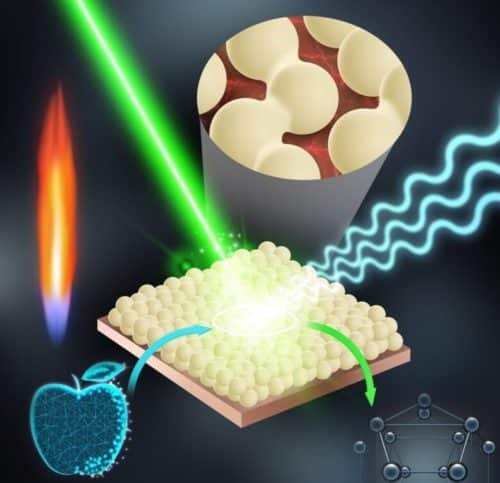Researchers at Sweden’s Karolinska Institutet have developed a small sensor for detecting pesticides on fruit. The approach uses flame-sprayed silver nanoparticles to boost chemical signal.
Surface-enhanced Raman scattering, or SERS, a strong sensing technology that can boost the diagnostic signals of biomolecules on metal surfaces by more than 1 million times, was used in these new nano-sensors. The researchers used flame spray to deposit small droplets of silver nanoparticles onto a glass surface to build a SERS nano-sensor. “The flame spray can be used to quickly produce uniform SERS films across large areas, removing one of the key barriers to scalability,” says Haipeng Li, a postdoctoral researcher in Sotiriou’s lab and the study’s first author.

To improve the sensitivity of the individual silver nanoparticles, the researchers fine-tuned the space between them. They employed a spectrometer to expose their molecular fingerprints after applying a tiny layer of tracer dye on top of the sensors to test their substance-detecting ability. According to the researchers, the sensors accurately and uniformly detected chemical signals, and their function remained unchanged when tested again after 2,5 months, demonstrating their shelf life potential and viability for large-scale manufacture.
The researchers calibrated the sensors to detect low quantities of parathion-ethyl, a hazardous agricultural insecticide that is prohibited or restricted in most countries, to evaluate their practical application. On a portion of an apple, a small amount of parathion-ethyl was applied. Later, the residues were collected using a cotton swab soaked in a solution to breakdown the pesticide molecules. The pesticides were detected when the solution was sprayed on the sensor.

“Our sensors can detect pesticide residues on apple surfaces in a short time of five minutes without destroying the fruit,” Haipeng Li says. “While they need to be validated in larger studies, we offer a proof-of-concept practical application for food safety testing at scale before consumption.” The researchers now want to see if the nano-sensors can be used in other areas, such as finding biomarkers for certain diseases at the point-of-care in resource-constrained environments.
Click here to access their study.







